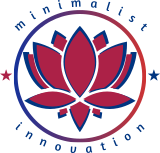The real question is “How can we build innovation on a foundation of stability?”
Scaling mature products while fostering innovation isn’t just a technical challenge – it’s a strategic one. CTOs often find themselves torn between driving change and ensuring the reliability of core systems. The key lies in clarity – defining the right kind of innovation, aligning it with strategy, and creating an environment where stability and innovation fuel each other.

Below is a checklist to help you balance innovation and stability while fostering sustainable growth.
✅ Tailor your innovation goals: Choose the innovation type (Kaizen, disruption, or new models) that aligns with your business strategy and embed change engineering practices.
✅ Leverage strengths: Modernize legacy systems incrementally to retain stability while driving innovation.
✅ Simplify through architecture: Use reference architectures to streamline scalability and minimize risks.
✅ Adopt a team topologies approach: Align team structures to enable collaboration and seamless innovation.
✅ Tailor the innovation your strategy demands
Tailor your innovation approach to align with your business strategy. Use incremental innovation (Kaizen) to optimize systems, disruptive innovation for game-changing breakthroughs, or business model innovation to open new opportunities. Embed change engineering practices from the start to ensure seamless adoption. An inquiry for your thought: How can you build on that success to amplify future outcomes?
▢ Analyze your strategic priorities to identify the right innovation type.
▢ Evaluate market demands and customer pain points.
▢ Plan for change management by embedding change engineering into product or service design.
✅ Preserve what works well
Don’t start from scratch. Build on reliable systems, workflows, and tools that already deliver value. Modernize incrementally to avoid destabilizing your core operations. An inquiry for your thought: How can your strengths and processes power your future innovation?
▢ Identify systems and processes that form the backbone of your success.
▢ Upgrade legacy systems gradually to maintain stability during transformation.
▢ Look to past successes to inform your approach to change.
✅ Simplify your architecture
Architecture teams can act as enablers by designing reusable reference architectures that reduce complexity and ensure scalability. By aligning innovation with architectural patterns, CTOs can create an environment where experimentation thrives without disrupting stability. An inquiry for your thought: How can your architecture team amplify growth and reliability?
▢ Standardize reusable architectural frameworks to support innovation at scale.
▢ Align architecture decisions with business goals to reduce friction.
▢ Implement modular designs to test and iterate without disrupting core systems.
✅ Adopt organization structure that support innovation
Adopt modern approaches like Team Topologies to structure teams for collaboration and innovation. Replace silos with stream-aligned teams, enabling teams, and shared platforms to foster alignment across the organization. An inquiry for your thought: How can your team structures evolve to better support innovation and growth?
▢ Structure teams around value streams to reduce bottlenecks and silos.
▢ Facilitate cross-functional collaboration to harness tribal knowledge.
▢ Encourage psychological safety and experimentation across all levels of the organization.





